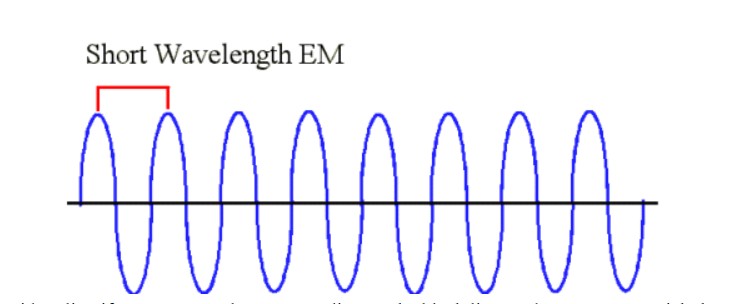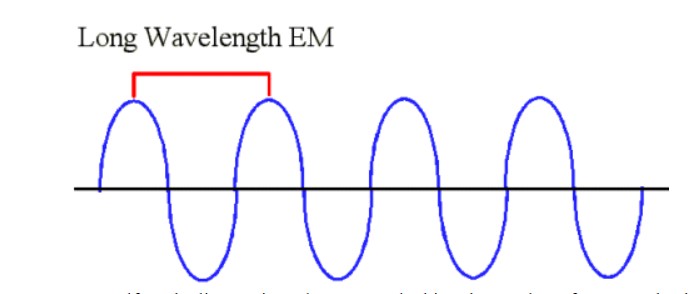Regardless of wavelength, radio waves make up the largest part of the electromagnetic spectrum, solidifying them as versatile tools that play a critical role in modern life. People have used radio commercially since 1900, helping to connect people across the globe through news, entertainment, and personal communication.
Shortwave Vs. Longwave Radio
Shortwave radio covers the high-frequency band of the radio spectrum. Shortwave uses the “skip” propagation method, where a signal is bounced off of the atmosphere. Longwave radio transmits waves in a straight line, capable of navigating objects and terrain to reach the receiver using low power.
Frequencies are a way to classify the peaks of a transmitted radio wave into shortwave and longwave and are always measured by hertz (Hz). It may sound like a science class, but the differences in radio waves share many basic underlying principles. Read on to find out what makes shortwave and longwave radio distinct from one another.
- Also learn, What is DMR Ham Radio and What is a Two Way Radio?

Shortwave Radio
Shortwave radio covers the radio spectrum 3 megahertz to 30 megahertz, placing it in the high frequency (HF) range, with a wavelength of 10 to 100 meters. Shortwave radio works by bouncing a signal off of the Earth’s ionosphere before returning to the receiver, making it a top choice for various public services, including:
- Maritime communications
- Cell Phone communications
- Amateur radio
- International news
As you can see, many of the online services you rely on during daily life are a result of shortwave radio technology. This makes shortwave radio an indispensable tool for disseminating information.
- Here’s the list of All Shortwave Radio Station Frequencies
- What is a Shortwave Radio?
The rapid growth of 4G and 5G cellular networks has taken radio usage to new heights. As innovation continues to utilize the 5G network into the prospective 6G, the radio will only become more standardized and contested over by authorities, like national governments distributing amateur radio operation licenses to individuals and groups.

Why Shortwave Radio Is Useful?
Shortwave radio is popular amongst amateurs and professionals that value its ability to traverse the globe through adverse weather. In general, the higher the frequency of a radio wave is, the shorter the range, but the higher the capacity. This enables cell phones to tap into a network of “cells” that justifies its shortened range.
Maritime Communications
Ships traversing sea value shortwave radio for its ability to amplify weaker transmissions by bouncing it off of the ionosphere and back down again. Since these vessels are always transmitting from sea level, their radio equipment can achieve a much higher range than if they were attempting to transmit a signal from land.
Today, many ships use satellite communications to obtain information, but only those specifically equipped to do so may enjoy the luxury that is modern satellite technology. Other ships stick to shortwave radio to ensure seamless communication familiar to both the transmitter and the receiver.
Cell Phone Communication
Cell phones emit low levels of radiation that may be harnessed in the same way standard radio units transmit and receive signals. Though not considered to be dangerous, the fact that every cell phone is a source of radiation makes mobile communication an obvious boon to the daily lives of cell phone users.
When a cell phone is powered on and told to transmit a signal, it does so using radiofrequency (RF) waves, which are weak enough that no damage is inflicted on the user. Categories within the RF spectrum include:
- Extremely low frequency
- Ultra-low frequency
- Very low frequency
- Low frequency
- Medium frequency
After medium frequency, the radio spectrum is reflected all the way to extremely high frequencies, after which experimental terahertz begins to appear. Terahertz are most often used in medical imaging to replace X-rays, though the applications of such high frequencies are still in the experimental phases.
Amateur Radio
Hobbyist radio operators have valued shortwave radio for decades. Once a government license to broadcast has been granted, anyone with an interest in running their own radio station may do so on the shortwave band. Shortwave radio operation experienced a popularity boom in 1989 and has been declining ever since.
Historically, amateur radio has also seen plenty of sporadic, unauthorized stations appear and disappear on the shortwave bands. Whether used for propaganda or entertainment, illegal amateur radio operators have existed since the first commercial uses were first honed in 1900. Other uses for amateur radio include:
- Music
- Personal learning
- Sports broadcasting
- Niche radio stations
Many amateur radio stations are untraceable, sparking debates as to where these signals come from. These debates tend to stretch into the decades, leaving time for repeat signals to appear and be analyzed. Governments have remained among the top explanations for these consistent, covert shortwave radio stations.
International News
Official state propaganda and international news programs broadcast via shortwave radio to reach a broader audience. Oftentimes this audience is foreign, which either requires translation on the receiver’s end or multiple broadcasts featuring all the different languages receivers will use to understand the signal.
The BBC World Service, broadcasting out of London, is the world’s largest international broadcaster. The BBC World Service was once known as the foremost user of a shortwave radio but has since expanded to podcasts, internet streaming, and satellite communications.
The BBC still broadcasts out of London, United Kingdom, focusing on global current events and spoken word programming as early as 1967. In 2021, the BBC expanded several of its programs from 45 minutes to one hour, a turning point in the history of the news station and promising signs of growth for the future.
Longwave Radio
Longwave radio ranges from 153 kilohertz to 279 kilohertz, with a physical wavelength of over 1,000 meters. Since longwave radio transmits a longer wavelength in a straight line, a wider area may be covered per transmission. Longwave radio has no definition, as its first users simply categorized its range as being higher than medium frequency.
When a longwave transmission is sent, the signal will maneuver obstacles in its path, travel beyond the horizon, and even follow the contour of Earth on its way to the intended receiver. This negates the need to propagate a signal by bouncing it off of the ionosphere, as is the case with shortwave radio. Notable longwave stations include:
- BBC Radio 4 (International news station)
- Europe 1 (Privately owned news station)
- France Inter (Leading French public radio station)
- Horizont (Bulgarian state news agency and radio station)
Sending long-range signals using low power is what longwave radio excels at. In this way, longwave radio is essential for ships communicating with inland utility stations. Due to the fluidity of longwave radio, neighboring radio spectrum categories like the medium wave band are considered to be the cutoff for defining longwave radio.
Europe has remained a leading contributor to public radio scenes, citizen centers, and news stations. Many of the European stations broadcasting today are products of the post-war cultures that appeared after World War I and World War II. Follow this far enough, and a history of national jamming and efforts will eventually appear.

Conclusion
Shortwave and longwave radio exist for the same reason: connecting the world. Each has its own strengths and weaknesses and uses that have caused each to fall in and out of style over decades of use. Since the radio spectrum covers such a wide range—30 Hz to 300 GHz—it is unlikely that radio will ever truly be retired.
New technologies like satellites have recently been reinvented with the application of constellations, where hundreds of satellites at a time orbit the globe in an orchestrated way. As companies and governments continue to buy into satellite constellations, the radio will be hard-pressed to overtake the momentum that comes with instantaneous signals.
- AM vs. FM
- AM FM Radio Headphones
- AM FM Portable Radio
- Rabbit ear Antennas
- Shortwave Radios
- Baofeng Radio
- Best Dual Band Mobile Radios
Sources:
- What is Radio Spectrum? | US Department of Transportation
- Types of Frequencies and Wavelengths in the Radio Frequency Spectrum
- Electromagnetic Radiation
- Long Wave Radio
- Transmitted Radio Wave
Topics Covered - Index